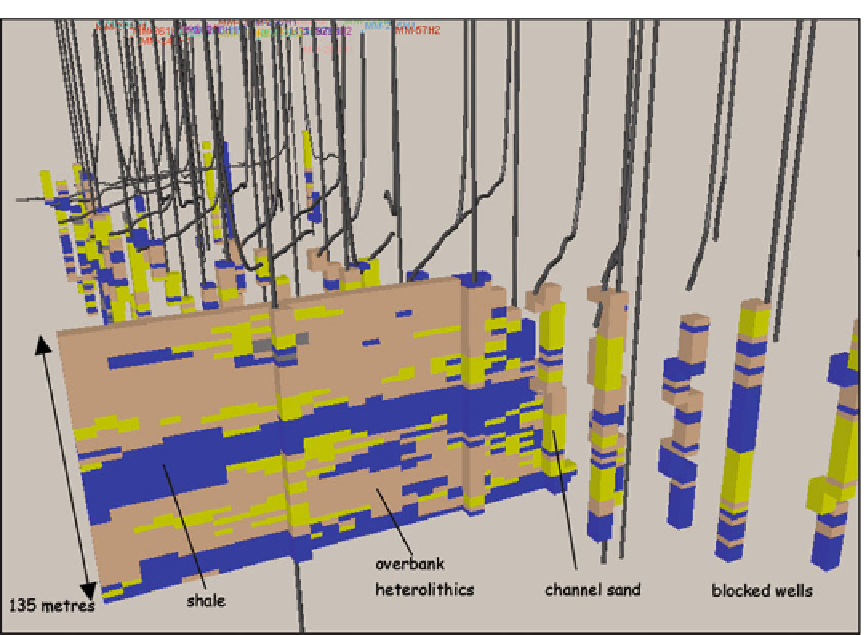Geoscience Reference
In-Depth Information
Fig. 2.37
Creating correlatable shale bodies (shown in
blue
) in a fluvial system using SIS (Image courtesy of Simon
Smith)
When using the SIS method as commonly
applied in commercial packages, we need to be
aware of the following:
1. Reservoir data is generally statistically insuf-
ficient and rarely enough to derive meaningful
experimental variograms. This means that the
variogram used in the SIS modelling must be
derived by intuitive reasoning (see previous
section).
2. The range of the variogram is not the same as
the element body size. The range is related to
the
maximum
body size, and actual simulated
bodies can have sizes anywhere along the
slope of the variogram function. The range
should therefore
always
be set larger than
your expected average body size, as a rule of
thumb - twice the size.
3. The choice of the type of kriging used to start
the process off can have a big effect. For sim-
ple kriging a universal mean is used and the
algorithm assumes stationarity. For ordinary
kriging the mean is estimated locally through-
out the model, and consequently allows lateral
trends to be captured. Ordinary kriging works
well with large numbers of wells and well-
defined trends, but can produce unusual results
with small data sets.
4. Some packages allow the user to specify local
azimuths for the variogram. This information
can come from the underlying architectural
concept and can be a useful way of avoiding
the regular linear striping which is typical for
indicator models, especially those conditioned
to only a small number of wells.
2.7.2.3 Facies Trend Algorithms
The facies trend simulation algorithm is a
modified version of SIS which attempts to
honour a logical lateral arrangement of elements,

